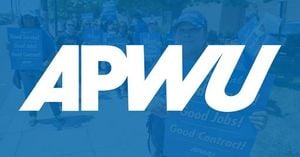FIFA has once again found itself at the center of a global debate, this time over its new human rights framework for the 2026 World Cup, which is set to be hosted across North America. On August 12, 2025, FIFA officially announced the introduction of this framework, requiring all host committees to develop detailed action plans to ensure the protection of human rights throughout the tournament. With just under a year to go before the first whistle, the world’s eyes are on FIFA and the sixteen host cities—eleven of which are in the United States—to see if these promises will translate into real, lasting change.
The new protocol is ambitious in its scope, aiming to address a broad range of issues across multiple countries and legal systems. It covers critical topics such as nondiscrimination, worker protections, anti-trafficking efforts, and the safeguarding of unhoused individuals. FIFA’s move comes after years of scrutiny and criticism following high-profile scandals and alleged abuses at previous tournaments, most notably the 2022 World Cup in Qatar, where migrant workers faced extreme conditions and limited protections.
Yet, despite the apparent progress, advocates and labor groups remain skeptical. The initial deadline for host city draft action plans was missed back in March 2025, raising concerns about the seriousness of FIFA’s commitment. According to FIFA, the cities are now on track to submit their final plans by August 29, but the delay has only fueled doubts among critics.
Jennifer Li, director of Georgetown Law’s Center for Community Health Innovation and national coordinator of the Dignity 2026 Coalition, summed up the apprehension: “The plan is just a plan. It’s not self-executing.” Her point has been echoed by experts who, while praising the protocol as a milestone in international sports, warn that without enforceable standards and clear guidance, the framework risks becoming little more than a paper promise.
Labor unions have joined the chorus of concern, especially about the lack of robust local organizing. Jeff Mitchell, president of the South Florida AFL-CIO, didn’t mince words: “FIFA likes to say they have human rights efforts, but they aren’t pushing it enough.” Union leaders argue that the success of the framework depends on genuine grassroots engagement and real investment in worker protections, not just top-down mandates.
Human rights advocates in the United States are particularly worried about the treatment of unhoused people during the tournament. Their fears are not unfounded—over 9,000 homeless persons were displaced or arrested in Atlanta prior to the 1996 Olympics, a fact that continues to cast a long shadow over major sporting events held on American soil. With the specter of history looming, many are calling for explicit guarantees that such mass arrests and displacements will not be repeated in 2026.
Immigration enforcement has also emerged as a flashpoint. Under President Donald Trump’s administration, the United States has seen heightened federal actions and, most recently, a travel ban on twelve countries enacted in June 2025. Critics worry that workers and travelers could be unfairly targeted during the World Cup, undermining the very spirit of international unity that the tournament is supposed to foster. Earlier this year, protests erupted outside FIFA’s Miami-Dade offices, with demonstrators demanding stronger protections for vulnerable groups, including immigrants and the unhoused.
Internationally, concerns have often centered on human trafficking and the rights of workers and local residents. These issues have plagued both the Olympics and FIFA tournaments in the past. The 2026 guidelines, shaped by the United Nations’ guiding principles, require World Cup bidders to uphold international human rights and labor standards. The International Labour Organization has called FIFA’s new human rights framework an “important step” toward aligning global sports with labor standards, but many observers believe there is still a long road ahead.
Some cities are not waiting for FIFA to lead the way. Atlanta and Seattle, for example, have already launched their own initiatives to address human trafficking, labor rights, and accessibility. These proactive measures are seen by many as models for how host cities can take meaningful action, even in the absence of strong enforcement from FIFA itself.
Despite these positive developments, the framework has not escaped criticism. Some experts say the protocol has been watered down from its original, more ambitious form. The lack of clear enforcement mechanisms and the reliance on host countries’ voluntary commitments have led to fears that the framework could ultimately fall short of its lofty goals. “It will require commitments from host countries to honor the terms of the agreement,” noted one expert, underscoring the challenge of turning policy into practice across so many different jurisdictions.
FIFA’s track record on these issues is mixed at best. The organization adopted its first human rights policy in 2017, requiring World Cup bidders to respect international labor standards. Yet, FIFA is currently facing mounting criticism over its handling of the 2034 World Cup, slated to be hosted by Saudi Arabia. International lawyers and human rights groups have accused FIFA of failing to uphold its own commitments in relation to the Saudi bid, casting doubt on the organization’s willingness and ability to enforce its standards when powerful interests are at stake.
Still, there is cautious optimism among some observers. The fact that FIFA is even talking about human rights—let alone requiring action plans from host cities—marks a significant shift from the days when such concerns were routinely brushed aside. The new framework, while imperfect, could serve as a blueprint for future international sporting events, provided that it is implemented with real accountability and transparency.
As the countdown to the 2026 World Cup continues, the world will be watching to see whether FIFA and its host cities rise to the challenge. Will the promises made in glossy action plans translate into meaningful protections for workers, immigrants, and the unhoused? Or will the event become yet another missed opportunity in the ongoing struggle to align global sports with basic human rights?
For now, the fate of FIFA’s human rights framework remains undecided. With the final action plans due by August 29 and mounting pressure from advocates, unions, and international organizations, the coming months will be critical. One thing is certain: the 2026 World Cup will be about more than just soccer. It will be a test of whether the beautiful game can truly live up to its ideals on the world’s biggest stage.






